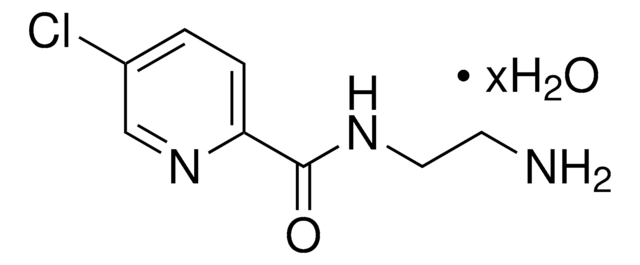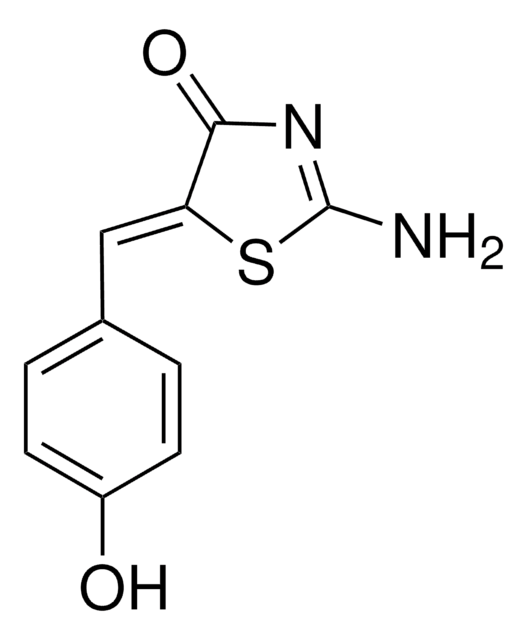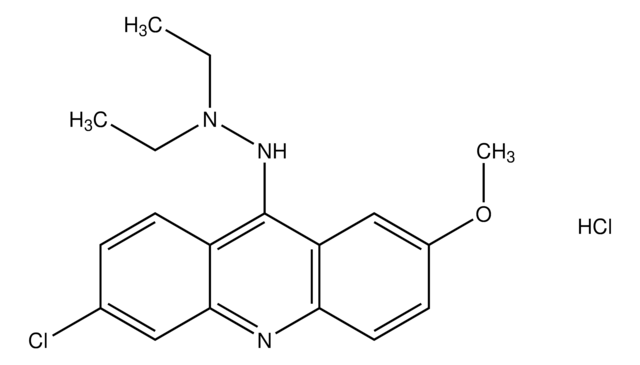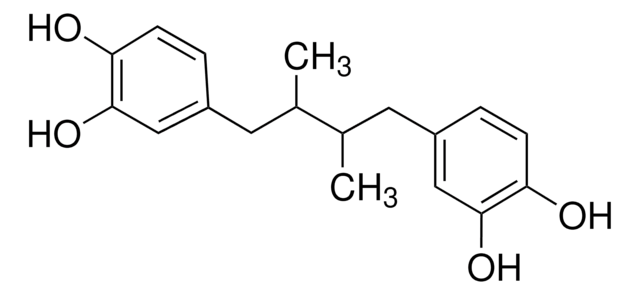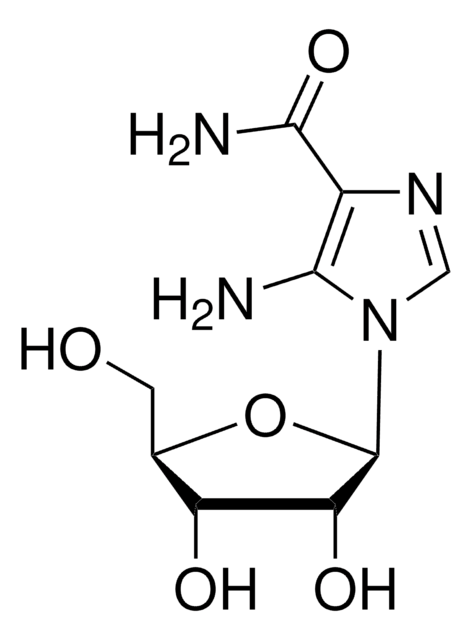SML0364
RAD51 Inhibitor B02
≥98% (HPLC)
Synonym(s):
3-(Phenylmethyl)-2-[(1E)-2-(3-pyridinyl)ethenyl]-4(3H)-quinazolinone
About This Item
Recommended Products
Quality Level
Assay
≥98% (HPLC)
form
powder
color
white to dark brown
solubility
DMSO: ≥5 mg/mL
storage temp.
2-8°C
SMILES string
O=C1N(CC2=CC=CC=C2)C(/C=C/C3=CN=CC=C3)=NC4=C1C=CC=C4
InChI
1S/C22H17N3O/c26-22-19-10-4-5-11-20(19)24-21(13-12-17-9-6-14-23-15-17)25(22)16-18-7-2-1-3-8-18/h1-15H,16H2/b13-12+
InChI key
GEKDQXSPTHHANP-OUKQBFOZSA-N
Application
- to test its effect on the polar body extrusion (PBE) rate in porcine oocytes
- for RAD51 inhibition in porcine embryos
- as RAD51 inhibitor and to test its effect on targeted nucleotide substitution (TNS) in induced pluripotent stem cells (iPSCs)
Biochem/physiol Actions
Storage Class Code
11 - Combustible Solids
WGK
WGK 3
Flash Point(F)
Not applicable
Flash Point(C)
Not applicable
Certificates of Analysis (COA)
Search for Certificates of Analysis (COA) by entering the products Lot/Batch Number. Lot and Batch Numbers can be found on a product’s label following the words ‘Lot’ or ‘Batch’.
Already Own This Product?
Find documentation for the products that you have recently purchased in the Document Library.
Customers Also Viewed
Our team of scientists has experience in all areas of research including Life Science, Material Science, Chemical Synthesis, Chromatography, Analytical and many others.
Contact Technical Service